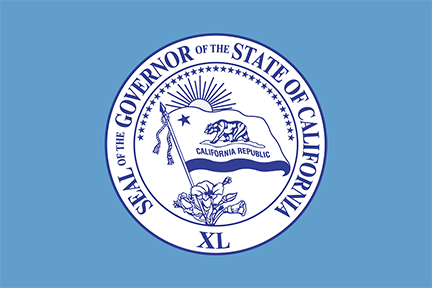SACRAMENTO – Today, Governor Gavin Newsom, State Board of Education (SBE) President Linda Darling-Hammond, and State Superintendent of Public Instruction Tony Thurmond announced that SBE unanimously approved nearly $1.3 billion in grants, appropriated during the 2021-22 and 2022-23 budget years, for community schools at its May meeting – the largest allocation of funds yet under the state’s nation-leading initiative to transform schools through a child- and family-centered lens.
WHAT GOVERNOR NEWSOM SAID: “California is transforming education to make schools a place where every family and student can succeed. Today we are expanding community schools across the state, offering everything from free meals twice a day, to mental health counseling, to before, after, and summer school programs to thousands more students.”
WHAT THIS MEANS: Community schools are a key initiative of California’s historic transformation of public schools that includes universal free school meals, universal transitional kindergarten, before- and after-school learning and investments in teacher training, coaching, recruitment and retention. The CCSPP statewide technical assistance infrastructure supports schools and LEAs to coordinate the implementation of these initiatives for maximum impact and sustainability.
The ten-year, $4.1 billion California Community Schools Partnership Program (CCSPP) is the nation’s largest investment in dismantling barriers to learning that contribute to inequitable student outcomes. Community schools partner with education, county, and nonprofit entities to provide integrated health, mental health, and social services alongside high-quality, supportive instruction with a strong focus on community, family and student engagement.
WHAT SBE PRESIDENT DARLING-HAMMOND SAID: “We know children learn best when they are healthy, happy and in a learning environment where they are surrounded by knowledgeable and caring adults attuned to their needs. Well-resourced community schools have been proven to transform students’ lives and improve the well-being of families, thus uplifting entire communities. I am grateful to Governor Newsom, the Legislature, State Superintendent Thurmond and my fellow Board members for continuing to prioritize family partnerships, equity and a ‘whole child’ agenda in public education.”
With the State Board’s action today, nearly $1.3 billion was awarded to 288 local educational agencies (LEAs) across the state. Those funds will support a total of 995 schools in implementing a community schools approach at their sites. The list of awardees can be found here. This allocation is in addition to more than $1.3 billion in implementation grants allocated in 2021 and 2022 to 204 LEAs and 1,028 school sites. The California Department of Education plans to administer a final round of implementation grants during the 2024-25 school year.
STATE SUPERINTENDENT OF PUBLIC INSTRUCTION THURMOND: “I am gratified to see our Community Schools initiative continue to grow as the third cohort of grantees receive funds. These grants support our schools to address foundational needs for learning, including mental health and family engagement. Our Community Schools continue to serve as exemplars of programs that educate the whole child. I am proud to see California continue to be at the forefront of recognizing that student wellness is a cornerstone of learning.”
COMMUNITY SCHOOLS AT WORK: In Eureka City Schools, which received Cohort 1 and 2 Implementation grants, investments in student transportation and Multi-Tiered Systems of Support have dramatically reduced chronic absenteeism. One McKinney-Vento student went from 40 absences to just one in a roughly 60-day timeframe, and another child went from 26 to one.
How California is Transforming Education:
-
Universal Pre-Kindergarten: California’s children will have access to crucial high-quality instruction by age 4 – effectively adding a new grade to the traditional K-12 system – regardless of a family’s income, with full-scale implementation anticipated by 2025.
-
Universal Extended-Day Learning: All elementary school students will have access to before- and after-school programs, as well as summer learning opportunities, by 2025.
-
Universal Free Meals: No student will need to learn on an empty stomach, with all students having the choice of two free, nutritious meals per day – regardless of income or family status.
-
Youth Behavioral Health: Youth ages 0-25 will have access to a revamped youth behavioral health system, including an online one-stop hub and billions invested to integrate mental health services with schools.
-
College Savings Accounts: Every low-income public school student will have an account opened in their name with a seed deposit of $500 to $1,500 – cultivating a college-going mindset, building generational wealth, and promoting college affordability.
-
Tutoring + Literacy + Math: Schools are helping students accelerate academic progress and mitigate learning loss due to the COVID-19 pandemic through tutoring, increased instructional time, and other student supports.
-
More Teachers, More Counselors, and More Paraeducators: Lower staff-to-student ratios is more support for students. Ratios will be lowered across settings and $1.1 billion in annual funding for high-poverty schools to hire up to 5 more staff each.
-
Master Plan for Career Education: Aligning and simplifying the TK-12, university, and workforce systems in California to support greater access to education and jobs for all Californians.
Related
- Classified School Employees Chosen as State Nominees for Outstanding Service
- Contra Costa County Teacher of the Year Finalists Announced

